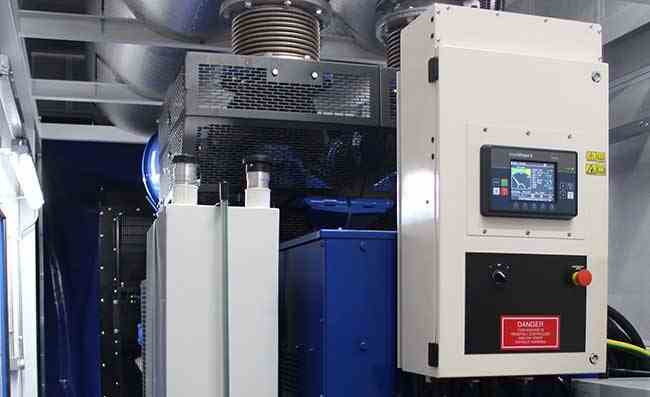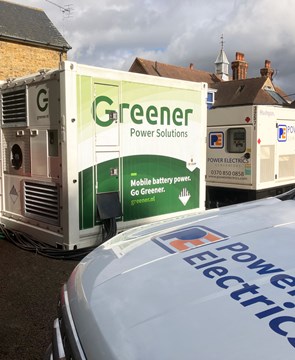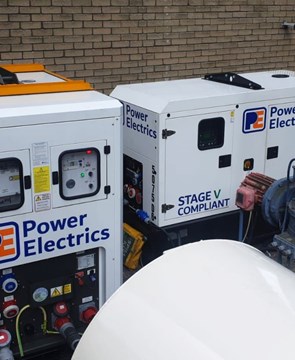Four Reasons Why Your Generator Fails to Start
In the result of a power failure standby generators are there for us when we need them the most… at least that’s what we hope.
As with any piece of machinery a generator cannot be 100% reliable, this blog will explore some of the common reasons why a diesel generator may fail to start and most importantly, how to reduce the risk of a failure.
Standby generators are often operated infrequently, meaning that monthly tests and service plans are vital to ensure problems are not occurring unknown to the operator. Let’s take a look at the most common reasons why a generator will fail to start and what you can do to prevent these from happening in the future.
1. Battery Failure
One of the most common reasons a generator will not start is due to a battery failure. Often this could be caused by a loose connection or a sulfation build-up (a build-up of lead sulphate crystals on the plates of lead-acid batteries). When sulfate molecules in the electrolyte (battery acid) become so deeply discharged it causes a build-up covering the plate leading to the battery not being able to provide enough current.
A battery failure can also occur due to the charger breaker being open inoperable, usually by a fault within the battery charger unit itself or the AC supply being disconnected by a tripped circuit breaker. This can often happen after a service or maintenance has been carried out when the charger has been turned off and not turned back on again. It is always worth double-checking the generator system after a service or maintenance has been carried out to ensure the charger supply circuit breaker is in the correct position.
Finally, a battery failure could be due to dirty or loose connections. Connections need to be regularly cleaned and tightened to prevent a potential for failure.
At Power Electrics we recommend you replace your batteries every three years to reduce the risk of failure.
2. Low Coolant Levels
Without radiator coolant, an engine would soon overheat, leading to mechanical breakdown and engine failure. Coolant levels should be checked regularly by visually checking if there are any puddles of coolant. The coolant colour varies depending on the manufacturer although it most commonly will look red.
Internally plugged radiator cores can also lead to low coolant level shutdowns. When the generator is operating under load, the thermostats open completely when the engine reaches the optimum operation temperature, meaning the radiator cannot allow the proper amount of flow through the core. Because the coolant has to go somewhere, it escapes through the overflow line. When the engine cools off and the thermostat closes, the level drops and activates a low coolant level shutdown to your generator. Because this only happens when the generator has reached to optimum running temperature under load, it is suggested that you test your generator with an external load bank with sufficient load to reach the temperature value needed to open the thermostats.
3. Bad Fuel Mix
Often the reason your generator will not start is linked in some way to fuel. A bad fuel mix can occur in several ways:
- When your fuel runs out the engine receives air but no fuel
- The air intake gets clogged, meaning there is fuel but no air
- The fuel system might be supplying too much or too little fuel to the mix. As a result, combustion does not occur properly within the engine.
- Finally, there may be impurities in the fuel (i.e. water in the fuel tanks) which causes the fuel not to burn. This is often the case when fuel has been standing in a tank for long periods.
As part of the routine service of any standby generator, it is always best practice to test the fuel to ensure it does not cause a fault in the future.

4. Controls Not In Auto
When your control panel displays the “Not In Auto” message this is a result of human error, normally due to the main control switch being left in the off/reset position. When it is in this position the generator may not start in the event of a power outage.
Regularly check the control panel of your generator to make sure the ‘Not In Auto’ message is not displaying. There are plenty of other faults displayed on the control panel that can result in your generator not starting. Find out more about these and how to reset them in our ‘How To’ video series.
Summary Video:
Hopefully, this blog has provided some insight into common reasons why your generator fails to start. It is important to remember that much like a car, a generator needs to be serviced regularly.
To find out about the diesel generator services that we provide at Power Electrics along with the range of maintenance services to meet your requirements below:




